For years, MB has ridiculed fake lefty, Jessica Irvine, for staunchly lobbying for ‘open borders’ mass immigration (e.g. here, here and here), while at the same time decrying the poor state of housing affordability in our biggest cities.
Over the weekend, Irvine penned another housing affordability whinge, blaming everything but her beloved ‘open borders’ mass immigration program [my emphasis]:
So, who to blame? Where to direct that first home buyer rage during all those lonely nights eating baked beans and watching free-to-air TV?
Well, John Howard is a good place to start. His introduction of the capital gains tax discount in 1999 preceded a massive run-up in property prices – albeit compounded by a halving in nominal interest rates.
Kevin Rudd, too, can get his share of ire. Kevin07 was elected promising to ease housing affordability, but in government jacked up the first home buyers grant to bolster house prices during the global financial crisis.
And let’s not let Treasurer Scott Morrison off the hook. His May budget was billed as a housing affordability budget, but delivered little but a grab bag of supply measures, taxes on foreigners and a super saver scheme which is yet to pass Parliament.
State premiers should get a shellacking, too, for their addiction to stamp duty, which, as a tax on transactions, prevents a more efficient allocation of the existing housing stock.
But if you really want to know who is to blame for high house prices, turn your attention to Sydney’s Martin Place, home to the headquarters of the Reserve Bank.
Want to know why house prices have soared? Look no further than lower interest rates…
Peter Phibbs, a professor of urban and regional planning at the University of Sydney, says Australian house prices have been caught up in the “perfect storm” post GFC.
“You had a combination of record low interest rates and a set of tax incentives that added fuel to the fire. We had a situation where we didn’t have stacks of supply in Sydney and Melbourne after the GFC, and, at the same time, we had quite significant increases in population.”
Yes, the RBA played a key role. Yet, recent years have seen the largest housing supply response ever in Sydney and Melbourne:
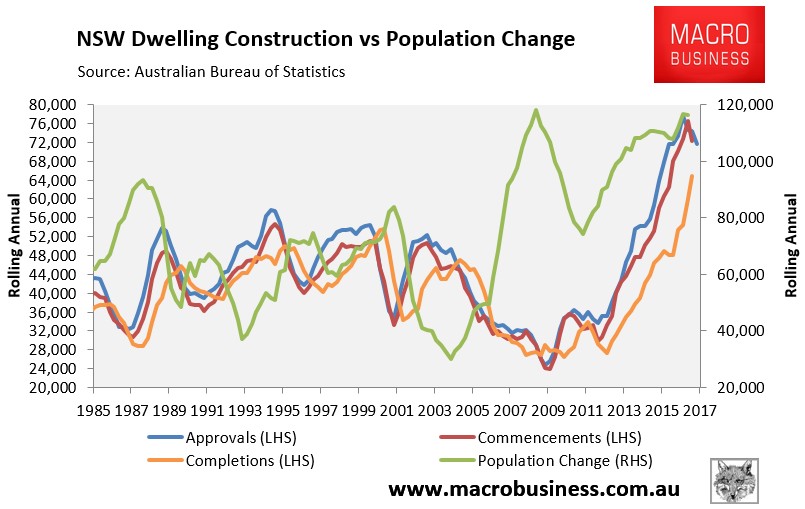
The problem is the 150% increase in Australia’s permanent migrant intake from the turn of the century, which is the primary driver of the “quite significant increases in population”, which overwhelmed even that:
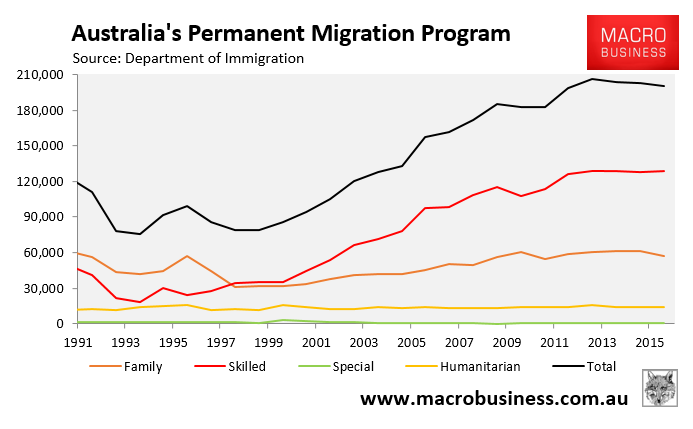
We all know that the massive lift in immigration had a huge impact on housing prices across the major markets in the years leading up to and immediately following the GFC, and continues to have a huge impact in Sydney and Melbourne to this day:
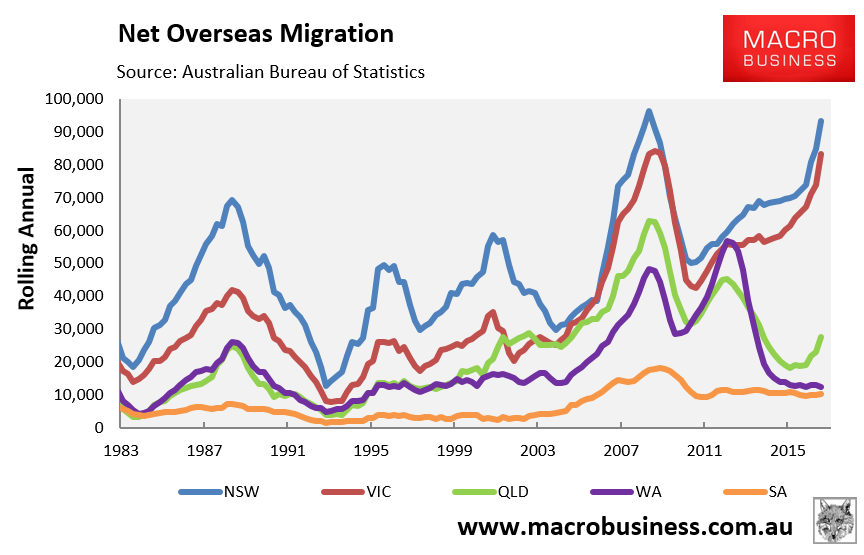
With Sydney’s population projected to increase by a crazy 1.7 million people over the next 20-years (1.5 million via net overseas migration):
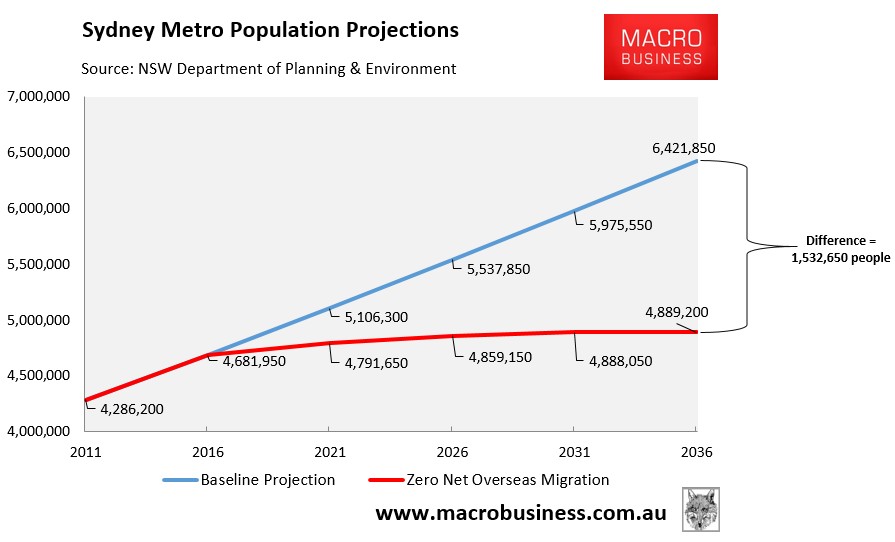
And Melbourne’s population projected to increase by an insane 3.4 million people over the next 35 years:
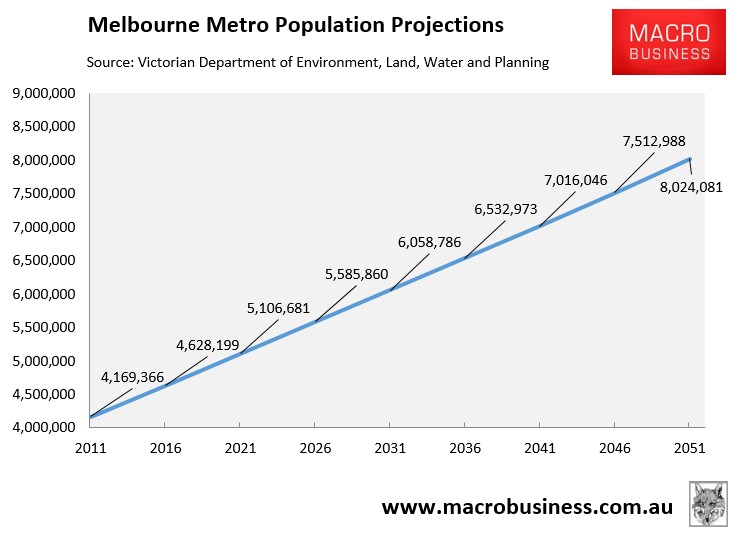
It means that housing affordability in both cities can only improve via structural crisis.
One of the most obvious and least cost policy solutions to mitigate Sydney’s and Melbourne’s housing and infrastructure woes is to significantly dial back Australia’s immigration program and remove the main demand driver creating the problems in the first place.
You can’t love mass immigration and then hate expensive housing, Ms Irvine.

